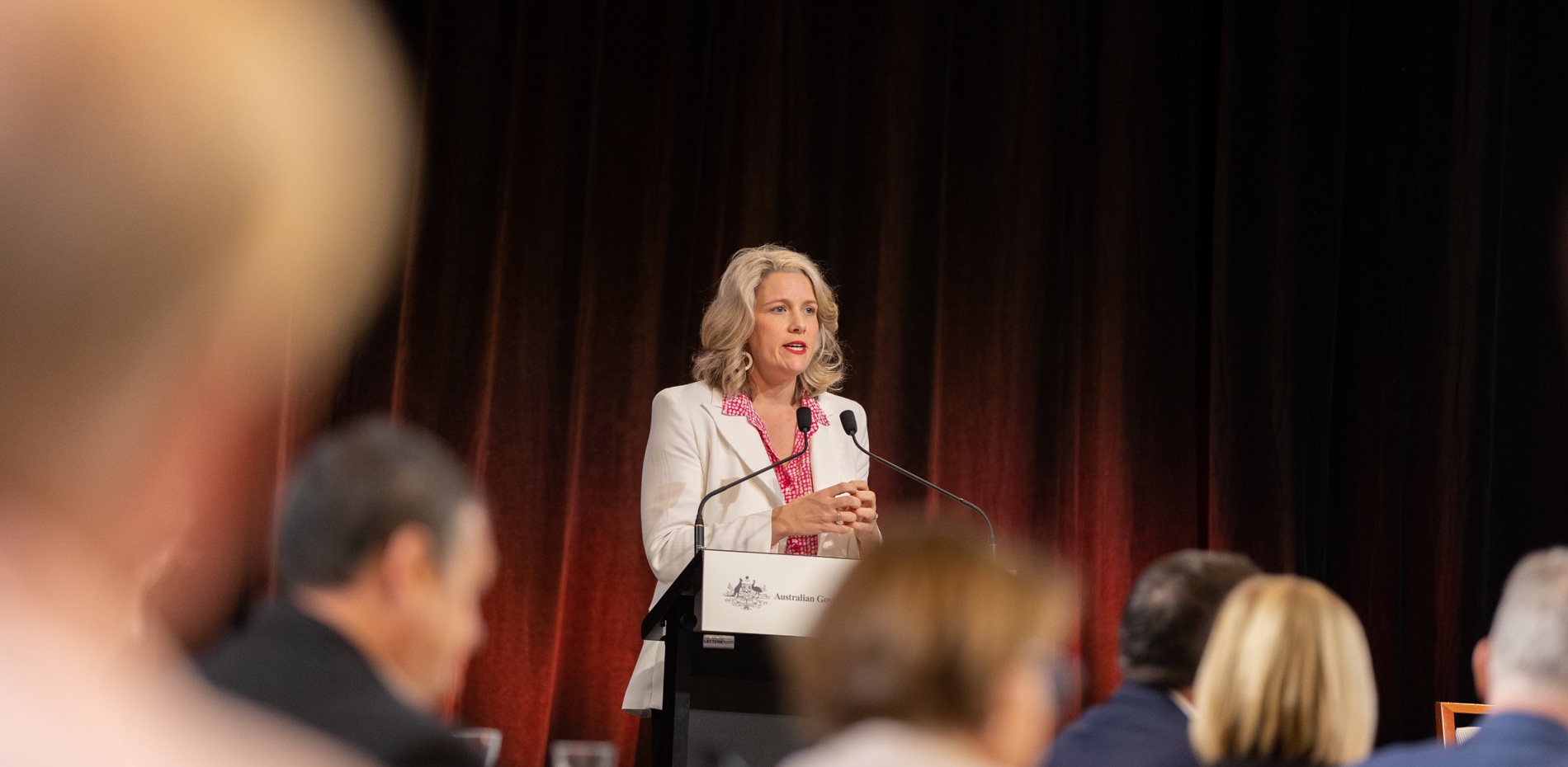CLARE O’NEIL MP
MINISTER FOR HOME AFFAIRS AND MINISTER FOR CYBER SECURTITY
MEMBER FOR HOTHAM
ADDRESS TO THE JOBS & SKILLS SUMMIT
A MIGRATION SYSTEM FOR AUSTRALIA'S FUTURE
PARLIAMENT HOUSE
CANBERRA
FRIDAY, 02 SEPTEMBER 2022
*** CHECK AGAINST DELIVERY ***
Thank you all for the hugely helpful discussion in our previous session.
One of the truly exciting things about migration is that there really is so much consensus.
Our government’s intent is to capture it, and take it forward.
The second migration session this morning is about the big picture. And I’ve been given this amazing opportunity to set the scene for that discussion.
Let me start by saying this.
Over the last century, our country never did anything big, or conquered any opportunity that really mattered, without inviting people from around the world to come and help us.
And when our immigration system has worked, when it has been that special sauce in our national story, it has been because the system met Australia’s needs in the moment.
After the Second World War, we needed to populate or perish. That program set the foundation for national reconstruction, formed the basis of the union movement of that period, and provided the cornerstone of our national security in the post-war years.
Think of the transition to multiculturalism in the 1970s, when Gough Whitlam buried the White Australia policy.
The migration program built out of that change, led to the creation of extraordinary, vibrant, entrepreneurial communities that helped power our country’s economy and society over the decades that followed.
Like the Vietnamese and Cambodian communities who make my home in South East Melbourne pulse with life.
But for the last decade, our immigration program has been on continental drift.
It has no strategy.
We make it easy for temporary migrants to come here, but very hard for highly skilled, permanent migrants. We’ve got it backwards.
The system is expensive, it is bureaucratic, it takes an eternity to get anything done.
There is no proper feedback between the migration and training systems, so areas of skills shortage come onto the shortage list and never come off again.
Australia’s migration system is not serving our needs.
And I think we should change it.
Because the coming 30 years will look very different for Australia than the last 30 did.
We are in a new era, that will bring some very difficult challenges.
We need to make a big shift to a lower carbon future, and we don’t have the skills we need to do it.
To break out of this period of stagnated productivity, we need to shake things up with faster uptake of technology across the economy.
But the people we need to help us - not enough of them are here.
Our population is rapidly ageing and we do not have the workforce we need to care for our elderly, nor the people to pay for that care.
Our region is growing more tense, and less stable. We need sovereign capabilities: in cyber, in the technology that will support our submarine defence program.
Immigration is not the complete answer to any of these challenges we face, but it is a part answer to all of them.
Immigration is one the biggest levers we have to drive our country forward, and it is fast, and it is powerful.
So I want Australia to pull it.
This is not about a bigger Australia or massive increases in migration numbers. It doesn’t have to mean any increase at all.
This is about thinking about this program as we should: how can we use migration, to build our nation for what the decades ahead will throw at us.
To build a migration program for the future, we are going to need to make a big switch in our thinking.
That switch is moving away from a system focused almost entirely on keeping people out, to one that recognises that we are in a global competition for talent.
Because for the first time in our history, Australia is not the destination of choice for many of the world’s skilled migrants.
Those best and brightest minds on the move are instead looking to live in countries like Canada, Germany and the UK. And those countries are rolling out the red carpet.
So what does our migration system look like for potential migrants? The current program is fiendishly complex. There are more than 70 unique visa programs, each with their own criteria and subcategories; there are hundreds of labour agreements and multiple skilled occupation lists; and an outdated visa processing system that is anything but fit for purpose.
People who want to live here can end up spending years filling out forms, at considerable personal expense, and then only be allowed to stay for a short while.
For those workers who do make it, there is no guarantee they will be looked after. We know we have a problem with worker exploitation, and that’s got to be addressed.
It not only undermines our core values as a nation, it damages our international reputation, and our standing on the world stage.
It’s time for a dose of humility, and a reassessment of our national self-image.
Now, we’re all here today, because we want to put a line under a decade where we just didn’t move our country forward.
And if we want to go back to being that smart, bold, clever country that thinks strategically about who it invites to become Australian, and helps them build a life here,
then we are going to have to roll up our sleeves and get in the global game for talent.
We have got to get into the fray.
And unless we all get that, then we will not be able to sustain the years of seemingly endless growth that we have all become used to.
The days of easy dividends are behind us. We’re going to have work smarter, and harder, to give that gift of prosperity to our children.
So, what are the big opportunities?
A migration program with strategy – that’s designed to help us thrive in the coming decades, and grow jobs for all Australians.
A simple, fast program that’s easy for businesses, big and small, and for migrants, to use.
A system where our training and migration systems are seamlessly connected, so skills shortages feed back into the career decisions of Australia’s young people.
A process where workers get protected, and valued.
One that unlocks the potential of all migrants – including refugees, and the many women and men who come here as secondary visa holders.
One that helps us prepare for the big challenges we face: climate change, massive technological shifts and our aging population.
And, one that thinks about sovereign capabilities. Our future is made in Australia. One of the most obvious and clear examples is in my portfolio area of cyber security, where skills is one of my main areas of focus.
In the coming weeks, our government will ask three eminent Australians, supported by a team of brilliant thinkers, to consider how we can rebuild our immigration program in Australia’s national interest.
I want to come now to our panel. And to the discussion from the floor.
Because now, it’s over to you. We have a genuine chance to get this right, and four brilliant people right here on the stage next to me to talk about how we can take that chance.
To our panel, to you, delegates:
The eminent Australians will review our migration system on your instruction.
Tell us what the immigration system of our future should look like, and we will use this discussion to build the terms of reference for their work.
Thanks everyone, and it’s my great pleasure to hand to Professor Brian Schmidt, Nobel Prize Winner, someone who we are all very, very lucky, decided to call Australia home.
ENDS



